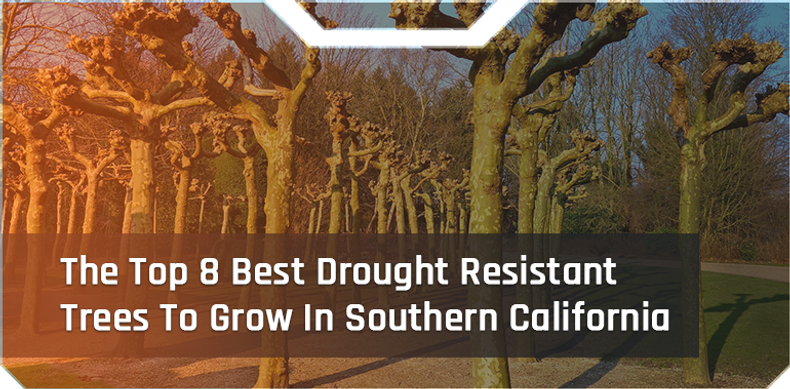With Southern California facing one of the driest years in recent history, people are rightfully rethinking what types of trees they should plant on their property.
If you are thinking about replacing the grass in your lawn with drought resistant trees and plants, this is a perfect time. This shift will be better for both the environment and your water bill, which may soon be skyrocketing.
While this guide will have a heavy emphasis on native plants as they are intrinsically often some of the most sustainable trees, we also will talk about some drought resistant trees that come from similar climates to our own.
1. The Western Rosebud
The Western Rosebud is definitely one of the most impressive trees fit for the unique climate of Los Angeles. In terms of both sustainability and aesthetics, it checks off nearly every box.
Aside from just being drought tolerant, it is resistant to the Oak Root Fungus that plagues many native plants. This tree commonly grows naturally in foothills and easily adapts to different types of soil.
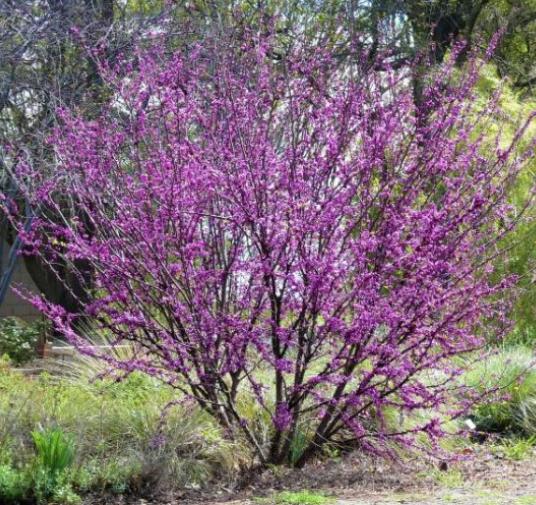
Wester Rosebud Features:
- California Native Tree
- Resists Most Types Of Pests
- Resistant To Oak Root Fungus
- Highly Tolerant To Drought Conditions
- Friendly To Hummingbirds & Gold Finches
- Adaptable To Many Different Types Of Soil
- Produces Beautiful Magenta & Pink Flowers
- Supports Pollinating Insects Like Bees & Butterflies
2. The California Fan Palm
Palm Trees are obviously an iconic part of the scenery of Los Angeles. What many people don’t know though is that most Palms are actually not native to California. In fact, the California Fan Palms is actually the only species of Palms that is native to our part of the world.
The California Fan Palm is uniquely equipped to survive many wild fires. It actually seems that many of these Palm Trees actually grow stronger roots after being exposed to fire.
Although The California Fan will benefit from some watering, it does adapt well to drought conditions, and will survive water shortages.
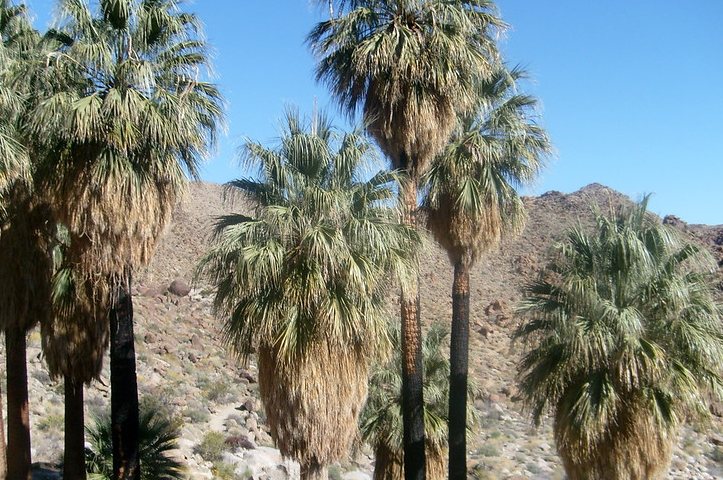
California Fan Palm Features:
- Tolerates Acidity
- Survives Most Floods
- Attracts A Variety Of Birds
- Grows Well In Sandy Soils
- Survives Hot & Cold Temperatures
- Uniquely Suited To Survive Wildfires
- Benefits From Watering But Can Survive Droughts
- Grows Up To 50 Feet Without Requiring Much Space
- The Only Species Of Palm Tree That Is Native To California
3. The Shademaster Honeylocust
The Shademaster Honeylocust may have some difficulty with flooding, but it will thrive in dry soil and survive drought conditions. These trees are incredibly low maintenance and their leaves will create a natural mulch without creating an eyesore.
As one would assume, these trees are great for casting shade while also allowing for filtered light to plants growing beneath them. They coexist well with pavement, making them good street trees.
Although they are not native to California, they are native to North America and generally survive well in Southern California.
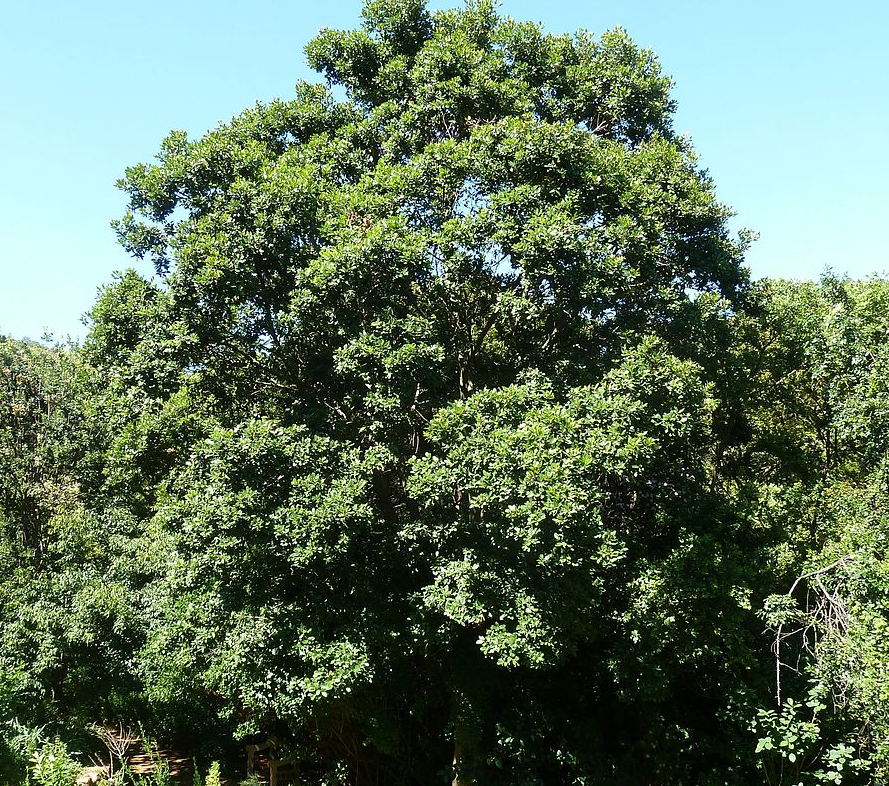
Honeylocust Shademaster Features:
- Grows Fast
- Attracts Bees
- Tolerates Acidity
- Fern Like Foliage
- Low Maintenance
- Excellent Street Trees
- Native To North America
- Tolerant Of Heat & Drought
- Provides Beautiful Filtered Light
4. Brisbane Box
It may seem strange that some trees from Australia would be making this list, but the Southwestern Region of Australia has a very similar Mediteranean Climate to the Southwest of the United States. This allows for plants to be pretty well compatible with both parts of the world.
The Brisbane Box grows absolutely beautiful flowers. If you live in an area with a lot of fog or some frost, this tree may not hold up especially well, but it is absolutely wonderful for warm areas with dry soil.
Another excellent feature of the Briz Box is that it holds up very well to smog and will help clean up the air. This is always welcome in Southern California where freeway traffic unfortunately creates a smog level that we would call gnar gnar.
Like the Shademaster, this tree is often used as a street tree, though it does leave some debris on cars and does best with 15-20 feet of growth room surrounding it.
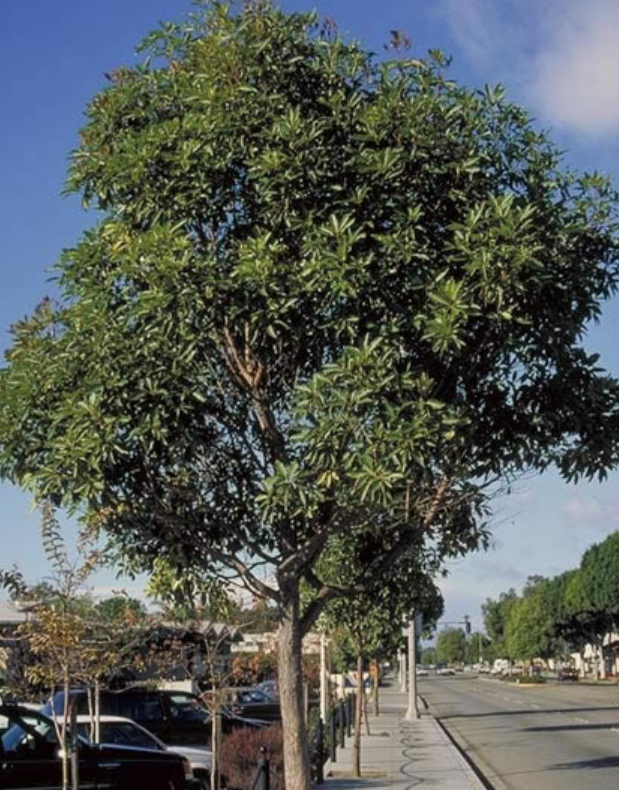
Brisbane Box Features:
- Combats Smog
- Ideal For Dry Soil
- Excellent Tree Structure
- 30-50 Height At Maturity
- Produces Beautiful Flowers
- Some Difficulty Surviving In Frost & Fog
5. California Junipers
If you are looking for a more modest tree, California Junipers are an excellent choice. Initially it requires a good amount of water, but once it is established, it needs almost no water at all.
Cal Junipers will remain shrub sized for quite some time before growing to tree height. They grow lovely blue berries that will attract wildlife and make your property prettier.
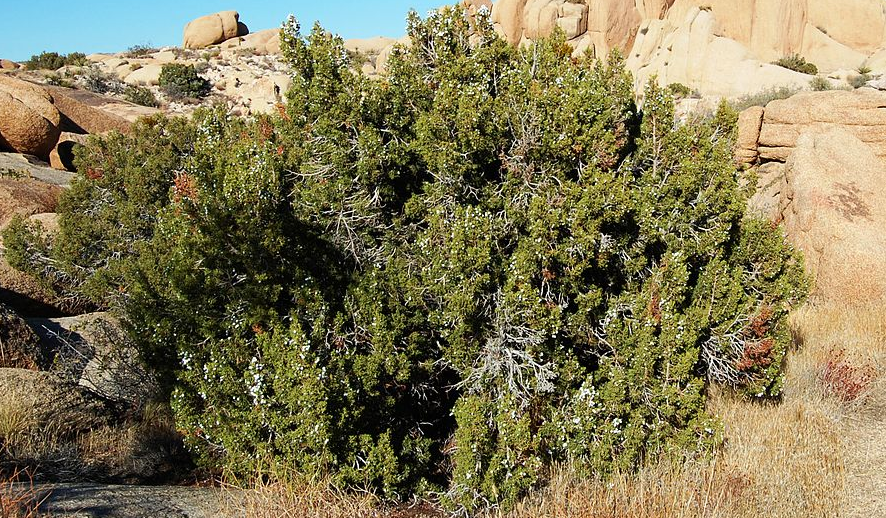
California Juniper Features:
- Resists Acidity
- Native To The Southwest
- Does Not Require Watering Once Established
- A Modest Evergreen That Stays Shrub Sized For Some Time
- Produces Lovely Blue Colored Berries That Attract A Variety Of Wildlife
6. California Box Elders
If you are living in an area like San Diego County, where there is generally some water available from streams, but there are also some drought conditions, the California Elder will be a good fit for your climate.
In other areas, it will need a good amount of water at first, but later develops pretty solid drought resistance. The California Box Elder holds up pretty well to extreme temperatures and wind.
Some people are turned off by the fact that Box Elder Trees attract Box Elder Bugs. They are a little creepy looking and a little stinky if you squish one, but they are generally harmless.
The California Box Elder Tree creates gorgeous leaves in Fall and modest but lovely flowers in early Spring. It is great for shade and attracting birds and wildlife in general.
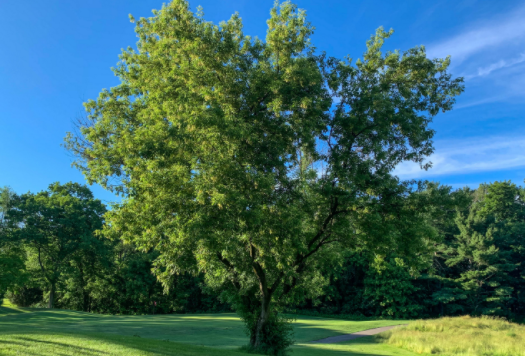
California Box Elders Features:
- Gorgeous Leaves During Autumn
- Grows Naturally In San Diego County
- Excellent Tree For Pollinators & Various Birds
- Produces Modest But Lovely Flowers In Spring
- Develops Great Drought Tolerance When Mature
7. California Holly Trees
Talk about iconic- Hollywood was literally named in reference to the California Holly Tree, which often appears as a shrub in its youth.
It is sometimes called A Christmas Berry Tree as it produces incredibly beautiful red berries that can be eaten if you cook them. They also sprout white flowers that are like candy for bees and butterflies.
These Holly Trees need no fertilizer, provide wonderful erosion control, and are highly drought tolerant.
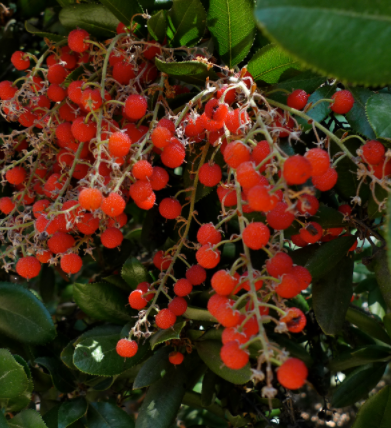
California Holly Features:
- Requires No Fertilizer
- A Broadleaf Evergreen
- Excellent Erosion Control
- Extremely Drought Tolerant
- Native To Coastal California
- Produces Distinct “Christmas Berries”
- White Flowers Will Attract Bees & Butterflies
- Often Appears As A Shrub But Can Grow 8-30 Feet Tall
8. The Australian Willow
As you may guess, like the Brisbane Box, The Australian Willow is native to the Southwestern Region of Australia.
This low maintenance tree adds excellent shade, and once it becomes established it is very tolerant to drought. It can adapt to most soil types and since it has few root problems, it is an excellent street tree. In maturity, it is quite majestic, quite often growing to 30 feet.
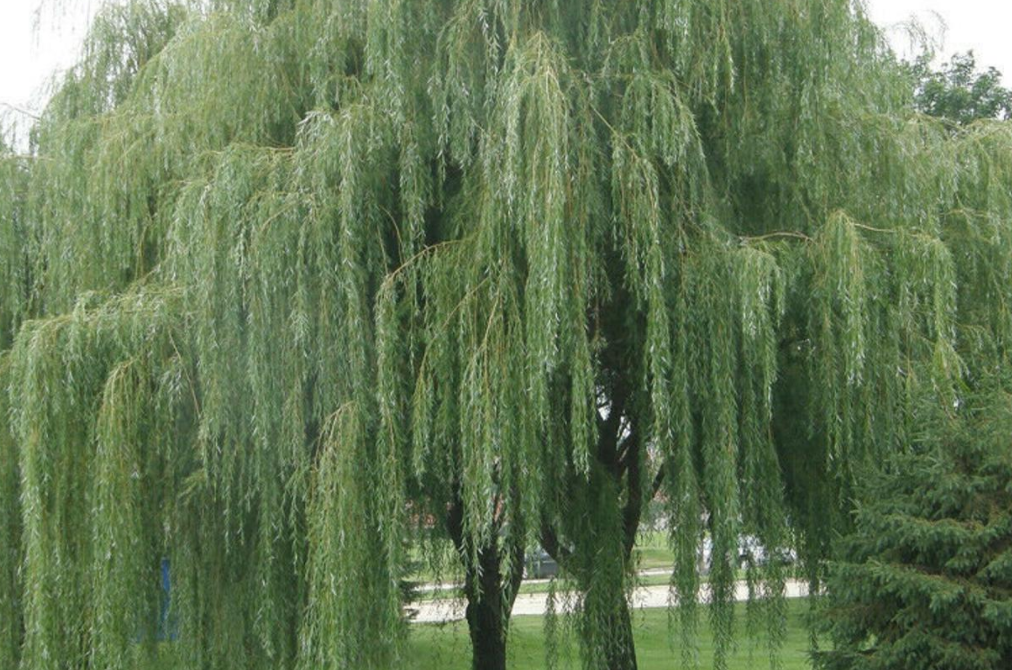
Australian Willow Features:
- Great For Shade
- Low Maintenance
- Non-Invasive Roots
- Excellent As A Street Tree
- Ideal For Both Coastal & Dry Climates
- Versatile For Many Different Types Of Soil
- Native To The Mediterranean Climate Of Southwest Australia
- Often Grows To 30 Feet In Maturity Without Requiring Much Space
We’re Outta Here, But First Here’s Some Tips
With California’s drought only getting worse, we know that many of you out there are looking for new ways to think about planting on your property. As you can see, there are some excellent and diverse options for drought tolerant plants out there.
Before you start tearing out your lawn, take a second and read a few plants.
Some Tips For Planting:
- Plant Trees In The Fall, Just Before Rain Season
- Seek Out Trees That Are Native To Mediteranean Climates
- Bonus Points Go To Trees That Are Friendly To Birds And Bees
- Consult With An Arborist Who Specializes In Native & Drought Resistant Plants
While we have focused on many native trees in this article, it may be worth it to mention that not all native plants are drought resistant, even living in a natural desert. Fruit trees and avocado trees in particular are very thirsty plants.
Whatever trees you end up planting, we wish that your thumbs turn green and that you get everything you are looking for out of your beautiful plants!


